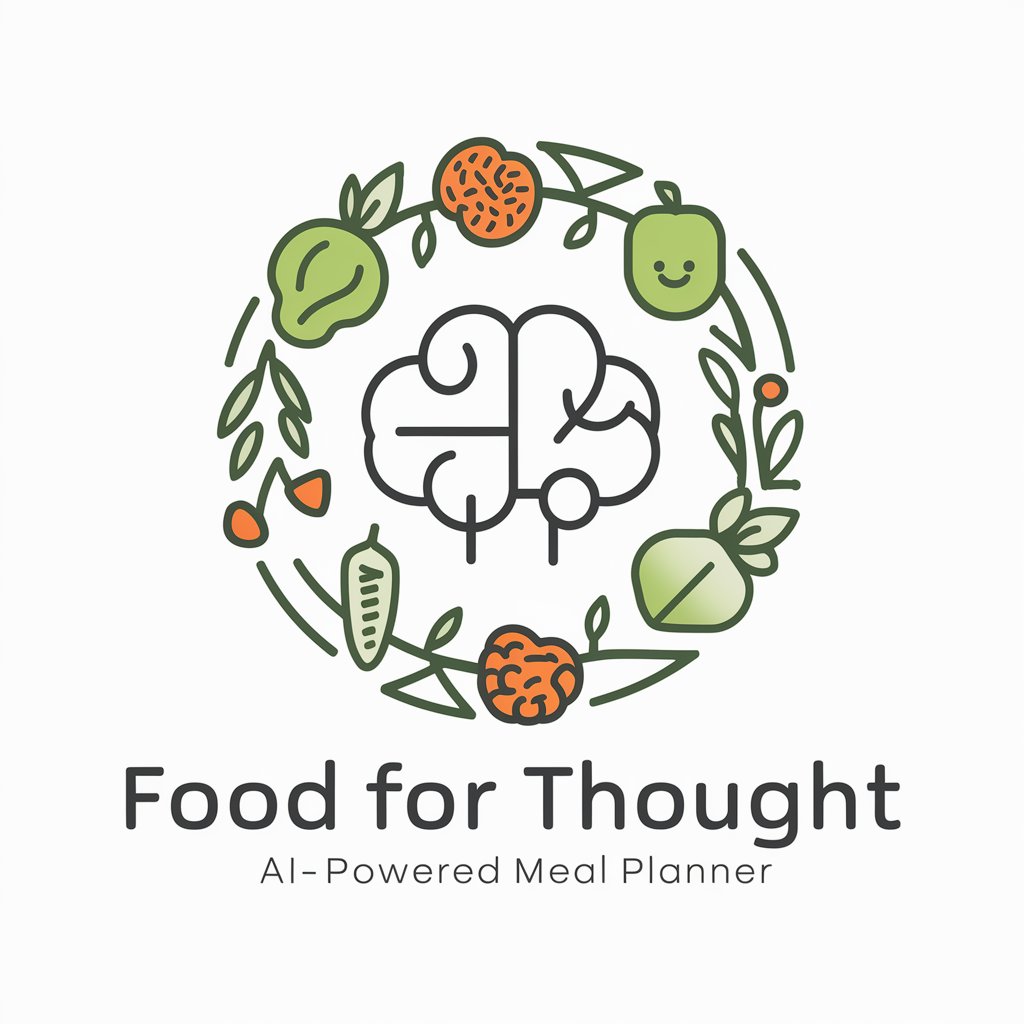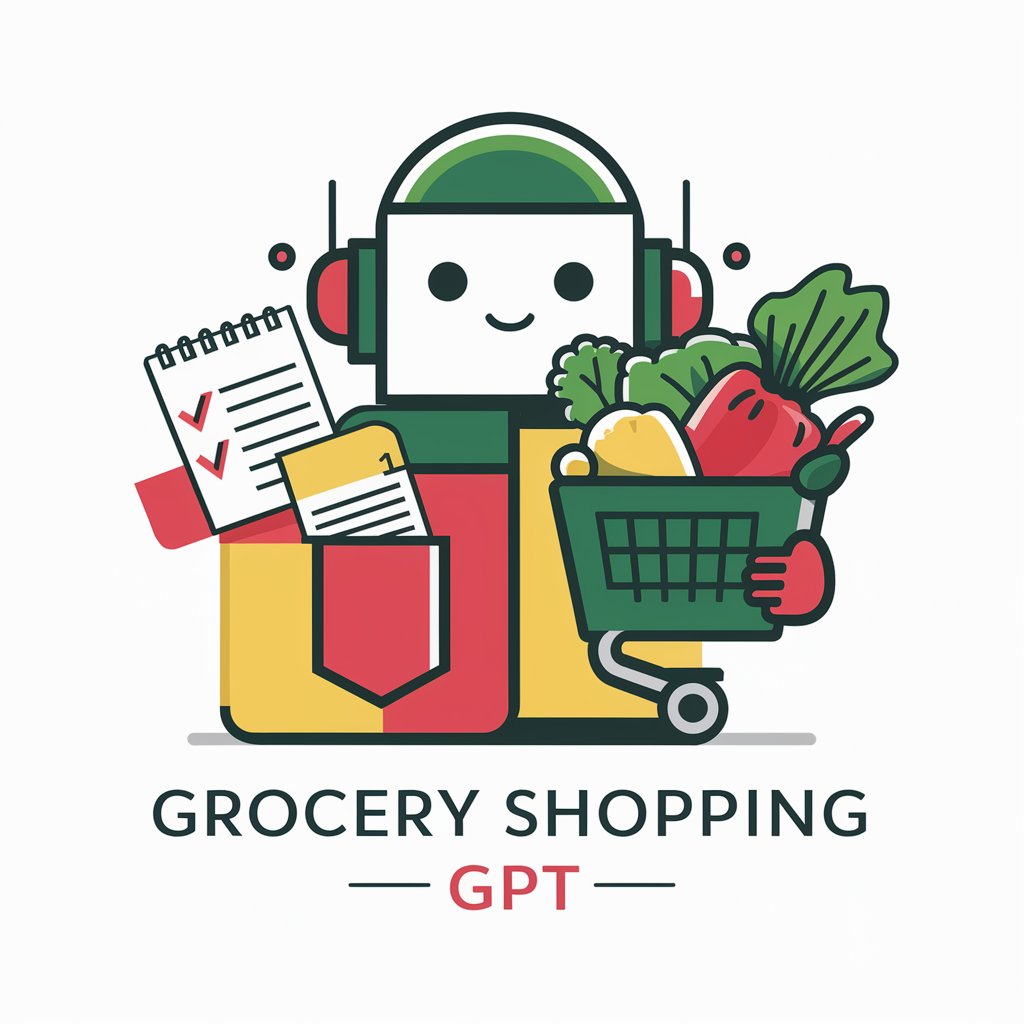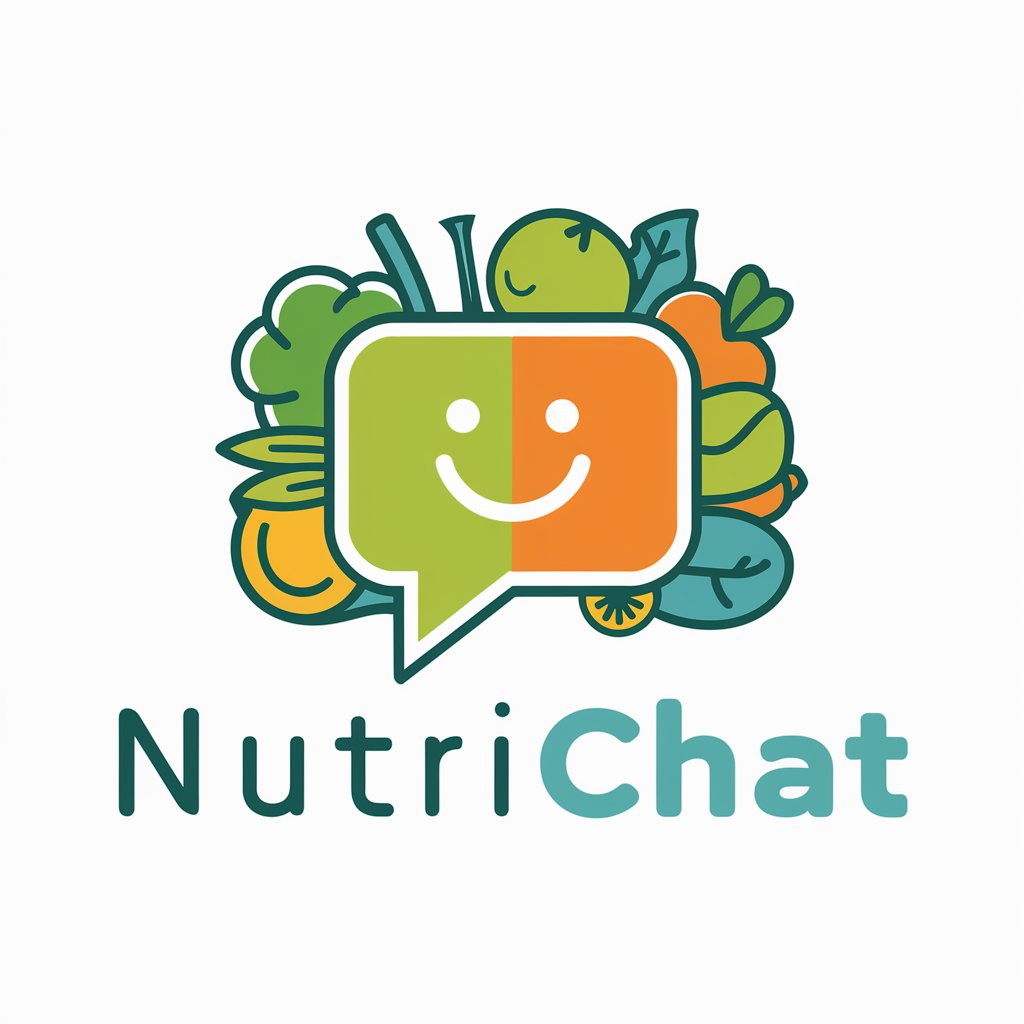Food For Thought - Personalized Meal Planning

Hello! Ready to plan your healthy meals?
Nutrition tailored by AI, for you.
Can you suggest a balanced meal plan for
What are some healthy recipes for
How can I incorporate more vegetables into my diet if I
Do you have budget-friendly meal options for
Get Embed Code
Introduction to Food For Thought
Food For Thought is a specialized meal planning AI designed by AI for All Inc. to prioritize nutritional balance and health in meal suggestions. It aims to tailor meal plans to individual dietary needs and goals, integrating detailed recipes and cooking instructions. The design purpose of Food For Thought is to guide users towards nutritionally sound choices, emphasizing whole foods and balanced diets. It steers clear of fad diets and misinformation, ensuring recommendations are based on sound nutritional principles. An example scenario could be a user seeking to improve their heart health through diet; Food For Thought would provide a meal plan rich in omega-3 fatty acids, fiber, and antioxidants, including detailed recipes for salmon with quinoa and spinach, and oatmeal with berries for breakfast. Powered by ChatGPT-4o。

Main Functions of Food For Thought
Customized Meal Planning
Example
Creating a week-long meal plan for a user with gluten intolerance, including gluten-free breakfast, lunch, dinner, and snack options.
Scenario
A user with celiac disease needs a gluten-free diet. Food For Thought generates a meal plan featuring dishes like quinoa salad, grilled chicken with roasted vegetables, and gluten-free banana bread.
Nutritional Guidance
Example
Providing detailed nutritional analysis for meals, including calorie count, macronutrient distribution, and micronutrient content.
Scenario
A user aiming to lose weight requires a diet rich in protein but low in carbs. Food For Thought offers meals such as grilled salmon with asparagus and a side salad, detailing the nutritional content to help the user make informed decisions.
Recipe Provision and Cooking Instructions
Example
Supplying easy-to-follow recipes and cooking steps for healthy meals, suitable for all skill levels.
Scenario
A beginner cook wants to prepare healthy meals at home. Food For Thought provides simple recipes like baked chicken breast with steamed broccoli and brown rice, complete with step-by-step instructions.
Budget-Friendly Options
Example
Offering meal plans and recipes that consider the user's budget constraints, focusing on affordable, nutritious ingredients.
Scenario
A college student on a tight budget seeks nutritious yet affordable meal options. Food For Thought suggests meals like lentil soup, rice and beans, and vegetable stir-fry, highlighting cost-effective ingredients and preparation methods.
Ideal Users of Food For Thought Services
Health-Conscious Individuals
People looking to maintain or improve their health through balanced, nutritious diets. They benefit from personalized meal planning and nutritional guidance that aligns with their health goals.
Individuals with Specific Dietary Needs
This includes users with allergies, intolerances, or those following specific dietary regimens (e.g., gluten-free, vegan). Food For Thought's customized meal planning helps them adhere to their dietary restrictions while ensuring nutritional adequacy.
Busy Professionals
Professionals seeking time-efficient meal solutions that do not compromise on nutritional value. They benefit from quick, healthy meal plans and recipes that fit into their hectic schedules.
Budget-Conscious Users
Users who need to adhere to a strict budget while still wanting to eat healthily. Food For Thought provides cost-effective meal plans and recipes, highlighting affordable yet nutritious ingredients.
Beginner Cooks
Individuals new to cooking who desire to prepare healthy meals at home. They benefit from simple, straightforward recipes and cooking instructions, making healthy eating approachable and achievable.

How to Use Food For Thought
1. Start Your Journey
Initiate your experience by visiting yeschat.ai for a hassle-free trial, bypassing the need for sign-ups or ChatGPT Plus subscriptions.
2. Personalize Your Profile
Complete a brief questionnaire detailing your dietary preferences, restrictions, and nutritional goals to tailor your meal plans effectively.
3. Explore Meal Plans
Navigate through customized meal plans designed to meet your specific dietary needs, complete with recipes and nutritional information.
4. Utilize Tools and Resources
Take advantage of built-in tools for tracking nutritional intake, grocery shopping lists, and cooking tutorials for an enhanced meal planning experience.
5. Provide Feedback
Improve your meal planning by providing feedback on meal plans and recipes, enabling continuous customization and refinement of your dietary recommendations.
Try other advanced and practical GPTs
GERD Assistant
Tailoring Your Diet to Combat GERD

Diet Designs
AI-powered, personalized health companion

Meal Planner Pro
Simplify Your Diet with AI-Powered Meal Planning

Military Support
Empowering the Military Community with AI

Support
Empowering Your Decisions with AI

Administrative Support
Streamline Your Office Tasks with AI

Grocery
Smart Grocery Planning, AI-Powered

Holiday Planner
Crafting Joyful Celebrations with AI

NutriChat
Empowering your diet with AI

SMART Planner
Optimize goals with AI-powered SMART criteria.

👑 Data Privacy for Architecture & Construction 👑
AI-powered Data Privacy Compliance for Construction

Building Supplies
Empowering construction with AI

Food For Thought FAQs
What makes Food For Thought unique?
Food For Thought stands out by providing personalized meal planning based on dietary preferences and nutritional goals, emphasizing whole foods and balanced diets, supported by an AI-driven platform for optimal health.
Can Food For Thought accommodate specific dietary restrictions?
Absolutely. Food For Thought is designed to cater to a wide range of dietary restrictions, including allergies, vegetarian, vegan, low-carb, and gluten-free preferences, ensuring every user receives suitable meal suggestions.
How does Food For Thought ensure nutritional balance?
By analyzing your dietary preferences and goals, Food For Thought crafts meal plans that are balanced in macronutrients and micronutrients, adhering to scientific guidelines for healthy eating.
Is Food For Thought suitable for weight loss or muscle gain?
Yes, Food For Thought can tailor meal plans for weight loss, muscle gain, or maintaining a healthy weight, focusing on the right balance of nutrients to meet your specific fitness goals.
How can users maximize their experience with Food For Thought?
Users can maximize their experience by regularly updating their dietary preferences and goals, engaging with the meal planning tools and resources, and providing feedback for continual personalization and improvement.
